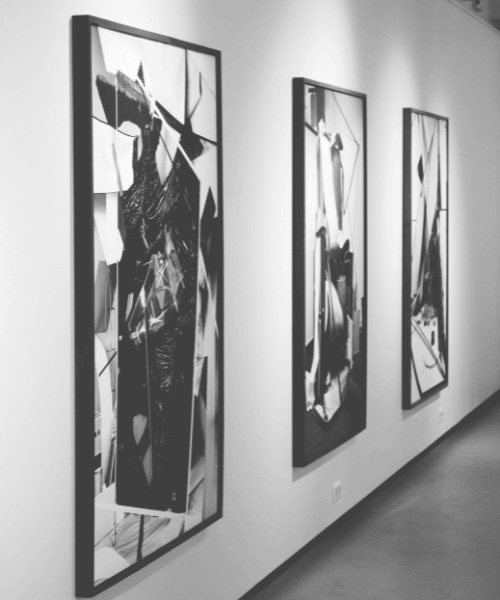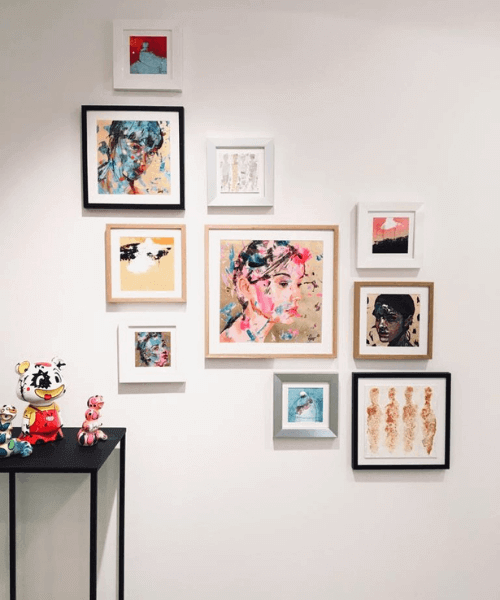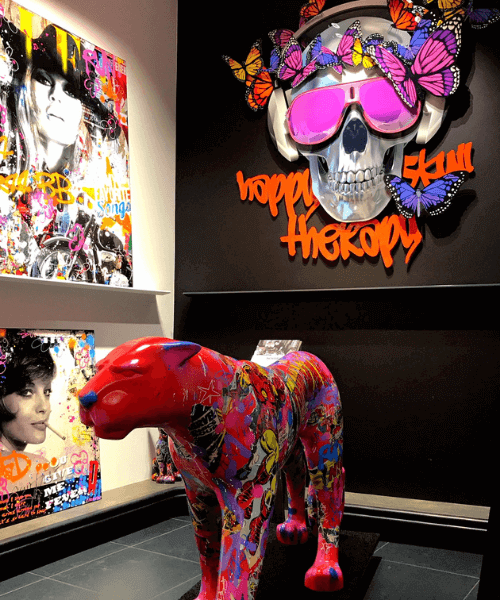Buy an artwork in the first art market
How does the primary art market work? Learn more by reading our article.
Summary
First art market: definition
When we talk about the first art market, we mean the first contemporary art market (late twentieth and early twenty-first century). It is therefore all the works of art created from the post-war years to the present day, put on sale for the first time. These works can be paintings, sculptures, drawings, photographs, videos, etc. They come from a multitude of artistic currents ranging from figurative art to pouring painting, including minimalism, hyperrealism, graffiti or digital art.
When these works are resold, they will pass into the secondary art market (auction, private agreement, etc.). These transactions can take the following form in France:
- sale by mutual agreement;
- auction in an international house such as Christie's and Sotheby's or French establishments such as Artcurial, Aguttes, Millon or Tajan.
First art market: the players
Artists, galleries, art fairs and art dealers are the main players in the primary art market.
They are the privileged interlocutors that art lovers or collectors will ask for the purchase of a work of art.

First art market: buying a work from the artist
Among the main players in the art market, the artist (painter, sculptor, visual artist, photographer, etc.) is at the top of the cast.
The price of the works is calculated according to the artist's price.
These price indices are obtained according to several criteria including the following:
- artist training;
- prestigious exhibitions;
- artworks held by influential collectors;
- prices obtained at auctions.
For emerging artists who do not yet have a rating, the price of the artworks will be calculated based on the following objective elements:
- cost of materials;
- production technique;
- creation time;
- format of works;
- artist's journey, etc.
First art market: contemporary art galleries
Both an exhibition and a place of commerce, contemporary art galleries promote the artists they represent.
As a talent scout, they can highlight the artworks of a single artist or a group of artists.
To make the artwork of their artists known to collectors, the galleries set up exhibitions regularly. Some are organized within physical space, others are visible online. Art galleries receive a share of the sales.
This is called the sales commission. The price of artworks is generally set jointly by galleries and artists, depending on the state of the art market.
First art market: the importance of art fairs
International art fairs are fairs that bring together galleries, artists, collectors and art lovers from different parts of the world each year.
The most prestigious gatherings in the global art market are:
- Art Basel (Basel - Switzerland);
- The European Fine Art Fair or TEFAF (Maastricht - Netherlands);
- The Paris International Contemporary Art Fair or FIAC (Paris - France);
- Frieze London and Frieze Masters (London - Great Britain);
- ARCO Madrid (Madrid - Spain);
- Arco Lisboa (Lisbon - Portugal);
- The Armory Show (New York - United States);
- Art Cologne (Cologne - Germany);
- Art Basel Hong Kong (Hong Kong - China).
First art market: art dealers
Unlike art galleries that represent an artist, art dealers or art brokers buy and sell artworks or objects of art.
These intermediaries conduct their business independently. Their mission?
Find and negotiate an artwork on behalf of their collector clients. To do this, they conduct their research on the art market nationally and globally.
Art dealers are paid on commission (10% and 20% of the sale price).



The leading art market in a few figures
According to the Art Basel 2020 report, worldwide art sales amounted to $ 64.1 billion (approximately € 52.685 billion) in 2019.
The primary art market accounted for 56% of sales. The United States held the first place in the world art market with 44% of sales, followed by the United Kingdom and China.
France's market share reached 7%. On the side of galleries and art dealers, sales were estimated at 36.8 billion dollars (30.25 billion euros approximately).
The online art market represented a turnover of 5 billion dollars (4.1 billion euros approximately). Art fairs occupied a central place in the world art market with 16.6 billion dollars (13.6 euros), or a quarter of worldwide sales. In the secondary art market, auctions totaled $ 24.2 billion (approximately € 19.9 billion).
The top 5 auction houses were Christie's (London), Sotheby's (New York), Phillips (London), China Guardian (Beijing, Shanghai, Hong Kong, New York) and Poly Auction (Hong Kong).
Complementary articles:
On the sujet:
Understanding the art market
Find out more:


